Red rose grape hybrid - features of care and cultivation
Red Rose grapes - a hybrid of Ukrainian selection with soft red or amber berries. The culture is distinguished by early ripening, frost resistance, high productivity and keeping quality, it is immune to downy mildew and powdery mildew. If the basic rules of agricultural technology are observed, it is possible to maintain the health of the plant and get a stable harvest annually.
Read in the article about the rules for growing a hybrid, features of care and characteristics of the crop.
The content of the article
Description of the red rose grape hybrid
The original name of the red rose table hybrid is Chervona Trojanda. The authorship belongs to the famous Ukrainian amateur breeder N.P. Vishnevetsky. To create a hybrid form, he used two high-yielding grape varieties: Red Delight (ZOS – 1) and Tsitsa Resistant.
The hybrid is recommended for cultivation in personal plots, cultivation in large vineyards and rejuvenation of the old fund. The most common in the southern and central regions of Russia, throughout Ukraine and Belarus.
The Red Rose grape adopted the best characteristics from the "parents":
- early ripening - 125-130 days;
- the number of fruiting shoots - 50-70%;
- frost resistance up to –25 ° С;
- immunity to fungal diseases to mildew, mildew and insects;
- high productivity;
- unpretentious care, subject to the rules of planting and pruning;
- high level of transportability and keeping quality;
- presentation of the bunches.
Appearance
A distinctive feature of the hybrid is the ability to change the color of the berries depending on the lighting. If the grapes grow on an area bathed in the sun, the berries become soft red, in the shade or partial shade, the color approaches amber. The skin is covered with a waxy coating.
The brushes are tapered, large, of medium density, up to 2 kg. The average mass of the hand is 700-1200 g.
The berries are large, oval in shape, weighing 12-16 g, are not prone to peeling, remain on the brush for a long time and do not fall off. As it dries, they turn into raisins. The pulp is juicy, dense, and the skin is tender and thin, not felt when used. Each berry contains 2-6 seeds.
The taste is balanced, sweet, with sourness. Sugar content - 16-26%, acid - 5-9%.
Flowers - bisexual, do not require additional pollination.
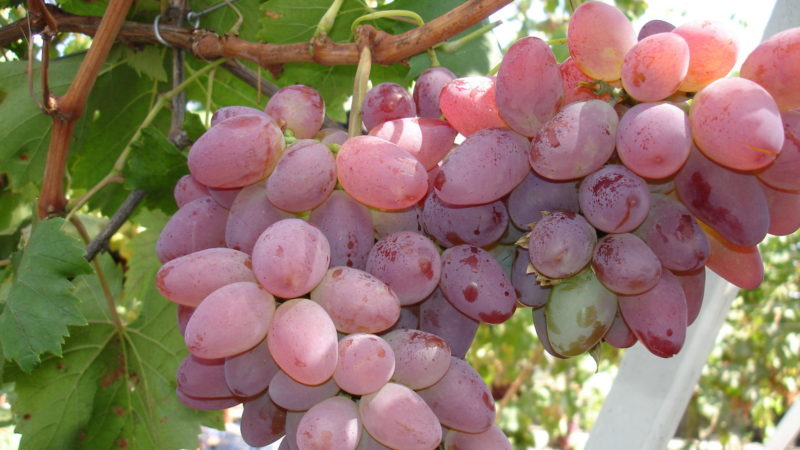
Features of growing and care
To grow a healthy vineyard on your site, it is important to take into account the climatic characteristics of the region. If the winter is not very snowy, and frosts are raging, it is preferable to plant the Red Rose seedlings in a trench to protect the root system from the cold. If the winters are snowy and the summer period is short, the seedlings are planted in a bulk ridge. With this planting, the roots will have enough heat.
Landing
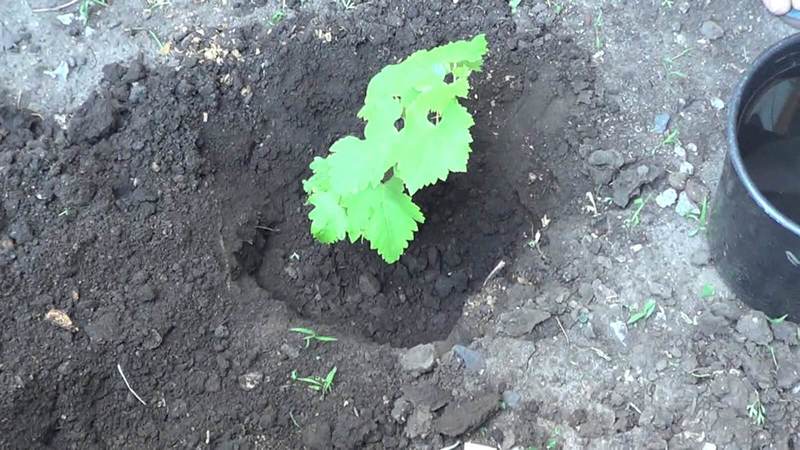
Planting a Red Rose is done in all known ways: seedlings, inoculation, taps. The hybrid is used for rejuvenation and old bushes. Experienced growers advise planting seedlings in the autumn.
The key to a healthy vine plantation is competent planting in several stages:
- The site should be sunny, dry, with deep groundwater, protected from gusty winds and the accumulation of excess moisture.
- The depth of the trench is 20-50 cm, depending on the type of soil. On loam, planting is performed at a shallower depth, on sand and sandy loam - deeper. Broken brick or rubble is placed at the bottom. A layer of earth mixed with humus, 5 kg of ash and 0.5 kg of azophoska is poured on top, then a layer of clean soil.
- A pipe is brought to the bottom to provide water access to the roots at the initial stage of seedlings development.
- Seedlings are purchased in specialized stores or nurseries. The root system is carefully examined - there should be no damage, dark spots and traces of rot on it. Before planting, the seedlings are dipped for 30-40 minutes in a mash made of clay and manure in a 2: 1 ratio, and the cut site is dipped in liquid paraffin.
- The seedlings are immersed in the prepared soil in the direction from south to north, observing an interval of 1.5 m, the rhizome is carefully straightened and covered with fertile soil. The surface is lightly tamped, watered abundantly with clean water, mulched with manure, peat, sawdust or straw.
- Trellises are used as support. A wooden stake is driven in next to each seedling and a wire is pulled between them.
Interesting. The vine is mentioned not only in ancient Greek myths, but also in Slavic mythology. If the Greeks had Dionysus as the god of viticulture and winemaking, then we have the goddess of fertility, love and fun - Zhiva (Lada, Seva, Penya). In the images, she is holding an apple in her right hand, and a bunch of grapes in her left, as a symbol of success.
The nuances of care
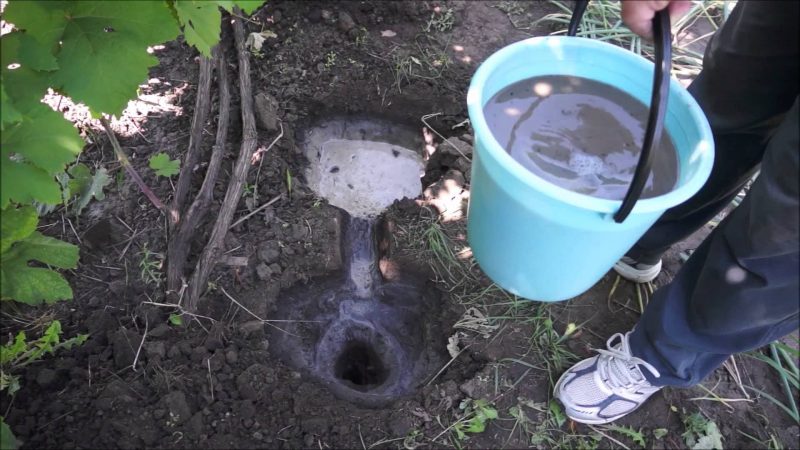
The Red Rose hybrid appeared recently, but it is already popular among winegrowers. Many of them share the secrets of caring for grapes:
- To increase fertility and maintain the same level, 2-3 ovaries are left for the shoot when pruning.
- To make the berries fill faster with a beautiful reddish color, after the formation of the ovaries, the shading leaves are removed.
- Particular attention is paid to the preparation of the soil and the bottom of the trench in order to prevent fungal diseases. Leaves with suspicious whitish or yellowish spots are removed, the bushes are treated with Bordeaux liquid or "Ridomil".
- The bushes have medium growth potential. When planting a vineyard, this feature is taken into account, and rows are formed at a distance of 2 m. When planting densely, caring for the bushes is difficult.
- Grapes prefer moderate watering and do not tolerate stagnant water, since the root system begins to rot, and the plant loses its resistance to fungal infections. Immediately after planting, during flowering and ovary formation, as well as in dry and hot weather, more intensive watering is provided.
Top dressing
Red Rose grapes are fed 3-4 times per season. Fertilizer consumption - 40 liters per 1 sq. m. Each fertilizer is first diluted in a small amount of water, then mixed in one container and the volume is brought to 40 liters.
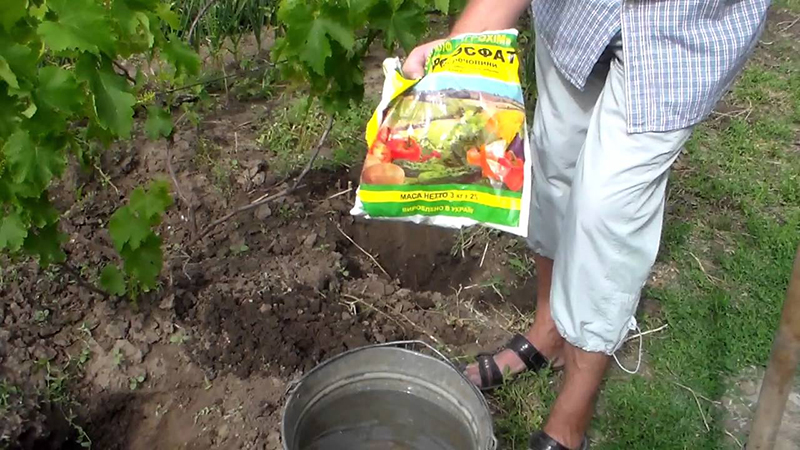
Top dressing scheme:
- I top dressing - root during the period of bud formation: 90 g of urea, 60 g of superphosphate, 30 g of potassium sulfate.
- II top dressing - root during the flowering period: 120 g of ammonium nitrate, 160 g of superphosphate, 80 g of potassium sulfate.
- III top dressing (optional, suitable for grapes grown in a short summer): 60 g of superphosphate, 30 g of potassium sulfate, solution of "Master", "Aquarin", "Plantafola", "Novofert", "Kemira". It is carried out during the formation of berries, to accelerate ripening, lignification of the vine and preparation for wintering.
- IV foliar dressing - before flowering: 40 g of urea, 100 g of superphosphate, 50 g of potassium sulfate, 5 g of boric acid per 10 liters of water. The liquid is used to spray foliage in the evening or in cloudy weather, so that the composition lingers on the surface longer.
Pruning
Grapes, by their nature, form more shoots and brushes than they can provide them with adequate nutrition. Therefore, pruning is one of the most important steps in vineyard care. It is performed with the aim of rejuvenating the bushes, stimulating the formation and growth of shoots, to obtain a rich harvest. If it is not carried out, the shoots will stretch, and the berries will become smaller.
In regions in harsh winters harbor grapes for the winter, and pruning is carried out in the fall, 14 days after leaf fall. Cut bushes are much easier to cover.
In regions with a warm climate, where grapes overwinter without shelter, pruning is done in the spring before buds appear.
Pruning rules:
- the tool must be sharp;
- the cut is made from the peephole;
- the fruit arrow is left above the replacement knot;
- the vine is always cut on one side.
In the spring, frozen, damaged and diseased branches, shoots with signs of fattening, more than 12 mm thick, exhausted - less than 5 mm are removed. 10-15 eyes and 1-2 nodes are left on one shoot.
Autumn pruning is carried out 1-2 weeks after harvest, following the recommendations:
- The vines are cut to live wood (cut light green).
- Above a living bud, leave 1-2 cm of the shoot.
- A certain number of eyes are left on each fruit, depending on the growth rate of the bush. For example, if the shoot is 5 mm thick, 5 eyes are left, 9 mm - 9-11 eyes, 12 mm - 13-15 eyes.
Winegrowers also practice summer pruning of young grapes. The main goal is to grow strong shoots. The first pruning of one-year-old grapes is carried out in June, out of 3-4 shoots, 1-2 of the strongest are left. In September, minting is carried out, for better ripening of the vine.
Possible problems
When growing a Red Rose in a cold climate, when the thermometer drops below –25 ° C, at the end of autumn the bushes are covered with agrofibre, slate, tarpaulin or thick film and covered with earth.
If the vineyard is located in a dark place with high humidity, the risk of infection with fungal infections increases significantly, despite the hybrid's immunity to downy mildew and powdery mildew. To maintain the protective forces, the plant is planted in a dry and sunny place, sprayed with Bordeaux liquid in spring and autumn and periodically renew the mulch layer.
The thin skin of the berries makes them attractive to wasps. To protect the crop from insects, each bunch is placed in a net or calico bags.
The caterpillars of the bunchworm damage buds, flowers and berries, and are capable of destroying 30-40% of the crop. The most harmful generations are the third and fourth. Caterpillars eat bunches of ripe grapes, so the use of chemicals is difficult.
To combat insects, use the drug "Enzhio 247". Liquid consumption - 500-600 ml / ha. The protection period is 7-20 days. Processing frequency - 2 times. The drug is intended for the destruction of 2nd and 3rd generation leafworms.
For the processing of grapes during the fruiting period, biological products are used: Fitoverm (3 g / 10 L), Aktofit (20 ml / 10 L), Bitoxibacillin (60-80 g / 10 L), Lepidocide (30 ml / 10 L).
Harvesting and application of the crop
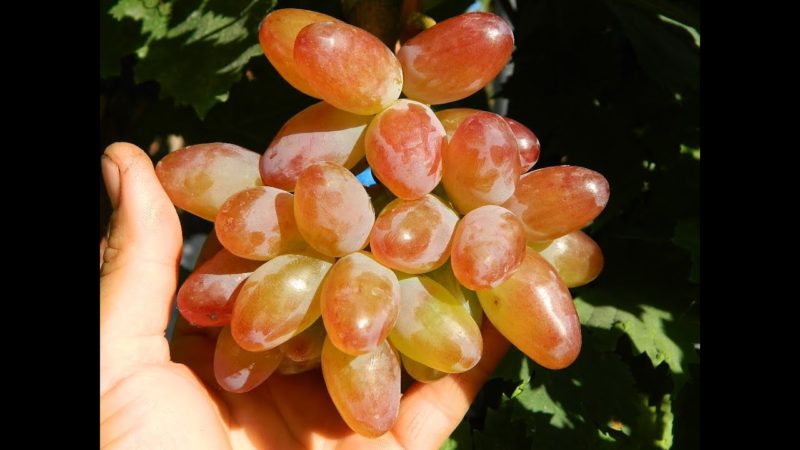
Harvesting is carried out in mid-August – mid-September. The bunches are put in boxes and keep in the cellar for 3-4 months at a temperature of + 2 ... + 4 ° С.
The grapes are ideal for fresh consumption, processing into raisins, compote, jelly, jam, light wine.
Conclusion
Among the many grape varieties, the new hybrid Red Rose deserves special attention. The culture was bred relatively recently, there is little information about it. The main part can be gleaned from specialized forums. Reviews of the hybrid are more than positive, growers appreciate it for its high productivity, excellent taste, weighty loose clusters with large berries and an attractive red or amber color.
In care, grapes are unpretentious, they need moderate watering, seasonal root and foliar dressings, vine pruning and prevention of fungal diseases.